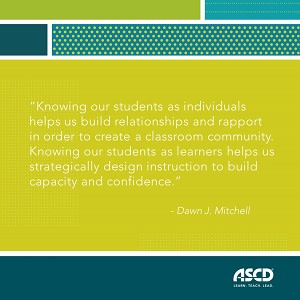Schools nationwide are still struggling to rebound from the devastating impact the pandemic had on student achievement, particularly in math—the area hardest hit. But there are districts with bright spots we ought to look at and learn from.
As a math curriculum leader, I visit and connect with educators and school leaders regularly. While many school leaders say academic recovery is still a goal, others report that math achievement has bounced back in their schools and, in some cases, is higher than it was before COVID-19 hit four years ago. There isn't one single solution that those districts have relied on. Rather, they're all supporting students with high-quality math instruction appropriate for their grade and using a range of specific strategies to address areas where kids are struggling. The choices they're making can inform decision-making in other districts.
Here are a few strategies districts are using to elevate their math instruction for all students.
1. Provide small, intensive tutoring.
In Pentucket, Massachusetts—where schools turned the corner last year and math achievement rose above Spring 2020 levels—district leaders have found success using assessment data to identify student learning gaps and supporting students in small-group, intensive tutoring sessions during the school day to address those gaps. Research shows this kind of high-dosage tutoring can help kids recover lost learning.
They're all supporting students with high-quality math instruction and using specific strategies to address areas where kids are struggling.
Students who need the extra help get it for several weeks at a time during a period of the day set aside to bolster student learning across subjects. Subject-matter teachers at the schools lead these sessions. So, students who need math help attend their regular class and then also get this extra help. This took creative scheduling by the district, but the effort is clearly paying off.
2. Capitalize on the summer break.
Another district where students are achieving above pre-pandemic levels in math is Durham Public Schools in North Carolina, which was recently highlighted in a report on education recovery efforts by Harvard and Stanford researchers. The racially and economically diverse district asked its most effective teachers to teach summer school and paid them $40 an hour, up from the usual $25 rate, which leaders said supported their recruitment effort. These teachers were also provided time for professional development and collaborative planning.
That is a smart investment. Research shows the best summer-school teachers are subject-matter experts who know the students they're teaching. The district also worked to include fun and engaging enrichment activities like coding and robotics and academic support in core content, including math.
3. Engage them with collaboration.
School leaders in Wamego, Kansas, have been focused on student engagement post-pandemic, a smart strategy given disengagement and high chronic absentee rates around the country. Specifically, the district has ensured students participate in active and collaborative learning experiences within each subject area. So, for example, if students are doing a problem set in math class, they work together to talk about how they would solve the problem and give each other feedback. District leaders say this has improved students' social-emotional skills, which got rusty during the pandemic, along with their academic achievement.
4. Don’t look back.
I live outside Chicago and have taught math in the area for years. Several districts here have shown tremendous resilience. Among them is the Elmhurst School District, which credits its academic recovery with setting and maintaining high expectations. Amid all the learning loss schools are seeing, it's understandable that teachers sometimes want to go back and review lessons from an earlier grade to ensure students can move forward. But in Elmhurst, all students receive daily grade-level instruction. Third grade class time must be spent on 3rd grade lessons. Then, during separate small-group sessions, which generally last around 15 minutes and take place after whole-class instruction has happened, teachers can address individual knowledge and skill gaps with their students.
In fact, Elmhurst has treated time as a valuable recovery tool. All students get a minimum of 50 minutes a day of math instruction, and many get 75 minutes, depending on the grade level. If schools aren't looking at systemic factors that impact achievement, like bell times and schedules, they ought to be. Research is clear that instructional time matters.
Focus on the Bright Spots
Those are just a few districts worthy of attention for the great work they're doing and helping students hit new achievement highs. Many others deserve a shoutout too and, more importantly, can serve as models for those still struggling.
Another important practice that seems to work universally is when schools teach math in a way that is relevant to students and connects to the world around them.
While districts are using strategies carefully tailored to their needs to bounce back, there are also a few common practices in virtually every district excelling in math instruction. One of these is to use a high-quality curriculum that is cohesive and emphasizes conceptual development in math, not just rote memorization or tricks to solve problems. Students still have to work on building procedural skills and math fluency, like memorizing multiplication tables, but that doesn't come at the expense of developing a deep understanding of key concepts like place value or fractions, for example.
Another important practice that seems to work universally is when schools teach math in a way that is relevant to students and connects to the world around them. One example is when students design their own dream homes using their knowledge of area and perimeter.
As a longtime math educator, I am of course worried about the historic declines schools are grappling with. But I'm also heartened by the innovative and evidence-based ways many educators are boosting student achievement in this vital subject—one that is critical to success in school, in future careers, and in everyday life.








